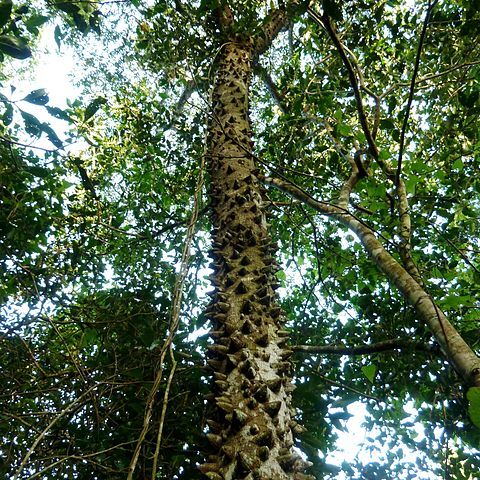Tree, 8-30 m high; trunk armed. Leaves alternate, pinnate, 80-250 mm long; rachis grooved above. Leaflets sessile, opposite or subopposite, (2)3-6-jugate, becoming progressively larger from basal pair upwards to apical one, terminal leaflet sometimes petiolulate or sometimes aborted; lamina 20-70 x 8-25 mm, lanceolate to narrowly elliptic, dotted with pellucid glands in marginal sinuses, margins crenulate-serrate, lateral veins many and rather closely spaced. Inflorescence of terminal panicles, 40-60 mm long. Flowers unisexual. Calyx of 4 small, ciliate sepals. Petals 4, free. Male flowers: pedicellate; stamens 4, opposite sepals; ovary rudimentary. Female flowers: staminodes rudimentary or absent; ovary obliquely obovate, with 2 sutures distinct, unilocular, with 2 apical ovules, with immersed glands; style simple, shorter than ovary and obliquely inserted; stigma capitate. Flowering time Oct.-Jan. Fruit a globose capsule, gland-dotted.
Tree, up to 30 m high. Leaflets acute or acuminate and slightly retuse at apex, lanceolate to oblong or narrowly elliptic with 16-20 or more pairs of primary lateral veins. Flowers 4-merous, in terminal panicles. Flowers creamy white.
Like Z. capense but leaflets lanceolate, acute, with 16-20 pairs of veins.

